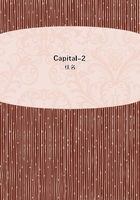
第79章
The manner of book-keeping does not of course change in any way the actual state of affairs booked. But it is important to note that customarily many lines of business figure the costs of repairs together with the actual wear and tear of the fixed capital in the following manner: Let the advanced fixed capital be £10,000 and its durability 15 years. The annual wear and tear is then £666 2/3. But the depreciation is calculated on a durability of only ten years; in other words, £1,000 are added annually to the price of the produced commodities for wear and tear of the fixed capital, instead of £666 2/3. Thus £333 1/3 are re-served for repairs, etc. (The figures 10 and 15 are chosen only by way of illustration.)This amount is spent on an average for repairs, so that the fixed capital may last 15 years. Such a calculation naturally does not prevent the fixed capital and the additional capital spent on repairs from belonging to different categories. On the strength of this mode of calculation it was assumed for instance that the lowest cost estimate for the maintenance and replacement of steamships was 15 per cent annually the time of reproduction being therefore 6 2/3 years. In the sixties, the English government indemnified the Peninsular and Oriental Co. at the annual rate of 16 percent, corresponding to a reproduction time of 6 1/4 years. On railways the average life of a locomotive is 10years, but the depreciation, counting in repairs is taken as 12 1/2 per cent, which brings down its durability to 8 years. In the case of passenger and goods cars, the estimate is 9 per cent, or a durability of 11 1/9 years.
Legislation has everywhere drawn a distinction, in leases of houses and other objects which represent fixed capital to their owners and are leased as such, between normal depreciation, which is the result of time, the action of the elements, and normal wear on the one hand and on the other those occasional repairs which are required from time to time for maintenance during the normal life of the house and during its normal use.
As a rule, the former are borne by the owner, the latter by the tenant.
Repairs are further divided into ordinary and substantial ones. The last-named are partly a renewal of the fixed capital in its bodily form, and they fall likewise on the shoulders of the owner, unless the lease explicitly states the contrary. Take for instance the English law: "A tenant from year to year, on the other hand, is not bound to do more than keep the premises wind and watertight, when that can be done without `substantial'
repairs; and generally to do repairs coming fairly under the head `ordinary.'
Even with respect to those parts of the premises which are the subject of `ordinary' repairs, regard must be had to their age and general state, and condition, when he took possession, for he is not bound to replace old and worn-out materials with new ones, nor to make good the inevitable depreciation resulting from time and ordinary wear and tear." (Holdsworth, Law of Landlord and Tenant , pp. 90 and 91.)Entirely different from the replacement of wear and tear and from the work of maintenance and repair is insurance , which relates to destruction caused by extraordinary phenomena of nature, fire, flood, etc.
This must be made good out of the surplus-value and is a deduction from it. Or, considered from the point of view of society as a whole, there must be continuous over-production, that is, production on a larger scale than is necessary for the simple replacement and reproduction of the existing wealth, quite apart from the increase in population, so as to be in possession of the means of production required to compensate for the extraordinary destruction caused by accidents and natural forces.
In point of fact only the smallest part of the capital needed for replacement consists of the money reserve fund. The most substantial part consists in the extension of the scale of production itself, which partly is actual expansion and partly belongs to the normal volume of production in those branches of industry which produce the fixed capital. For instance a machine factory must arrange things so that the factories of its customers can annually be extended and that a number of them will always stand in need of total or partial reproduction.
On determining the wear and tear as well as the costs of repairs, according to the social average, great disparity necessarily appears, even in the case of capital investments of equal size, operating otherwise under equal conditions and in the same branch of industry. In practice a machine, etc., lasts with one capitalist longer than the average period, while with another it does not last so long. With the one the costs of repairs are above, with the other below average, etc. But the addition to the price of the commodities resulting from wear and tear and from costs of repairs is the same and is determined by the average. The one therefore gets more out of this additional price than he really added, the other less. This circumstance as well as all others which result in different gains for different capitalists in the same line of business with the same degree of exploitation of labour-power tends to enhance the difficulty of understanding the true nature of surplus-value.
The line between repairs proper and replacement, between costs of maintenance and costs of renewal, is rather flexible. Hence the eternal dispute, for instance in railroading, whether certain expenses are for repairs or for replacement, whether they must be defrayed from current expenditures or from the original stock. A transfer of expenses for repairs to capital account instead of revenue account is the familiar method by which railway boards of directors artificially inflate their dividends.